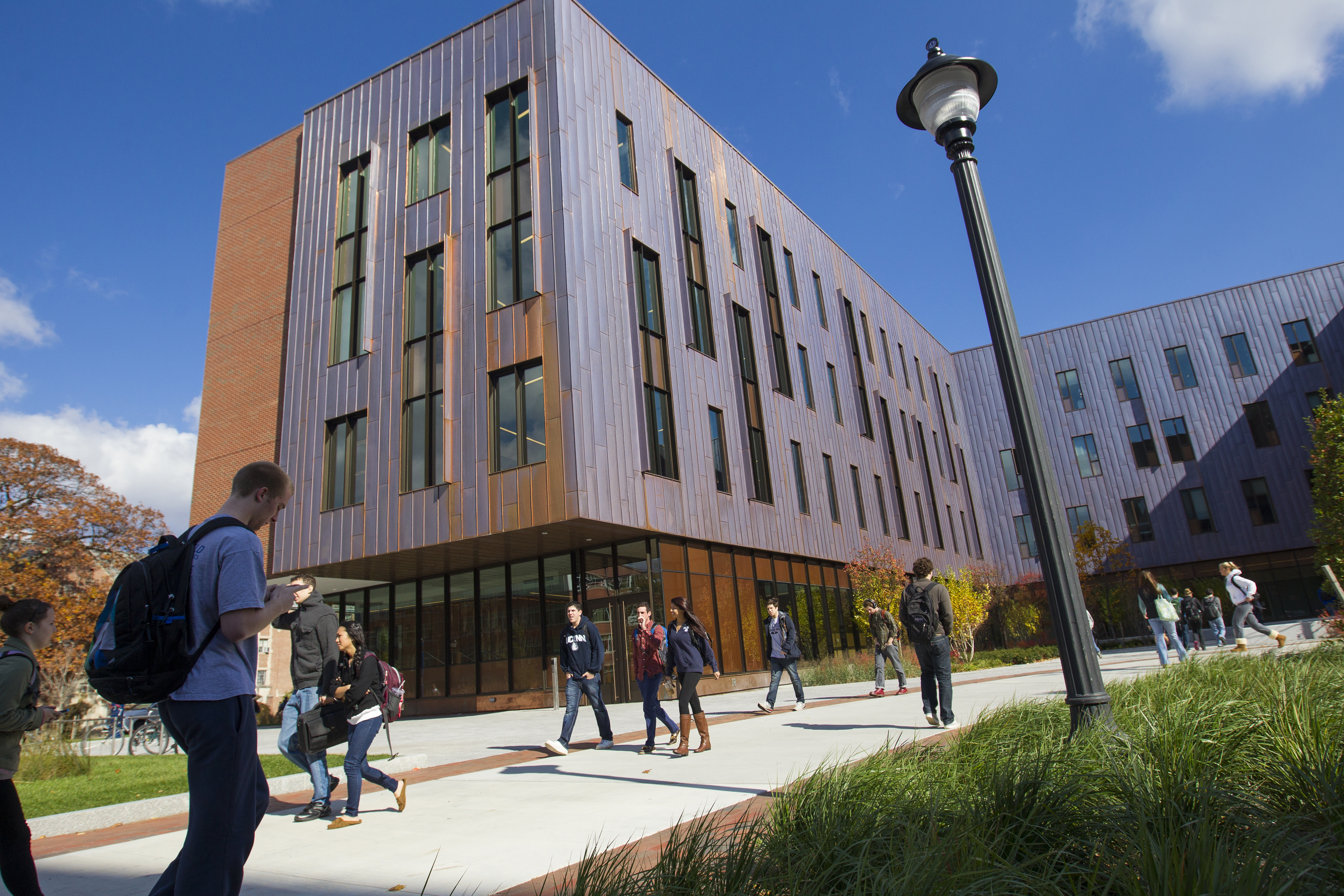The Board of Trustees recently raised UConn’s minimum green building standard from LEED Silver to LEED Gold, taking another step toward achieving carbon neutrality by 2050 and securing other environmental goals.
In 2007, UConn was among the first public universities in the nation to adopt LEED Silver certification as a base standard for all new construction and major renovations. LEED, which stands for Leadership in Energy and Environmental Design, is a nationally accepted independent certification for design, operation, and construction of high-performance ‘green’ buildings.
UConn’s early adoption of the criteria was an important factor in 2012, when the Sierra Club ranked the University top among the nation’s greenest colleges and universities.
Since UConn took that step, the University has registered or certified 34 LEED projects totaling more than 3.3 million square feet. Those LEED-certified buildings have realized measurable energy and water savings, with lower operating and maintenance costs and increased productivity, according to Scott Jordan, executive vice president for administration and chief financial officer.
Among the projects, four – Laurel Hall, Oak Hall, McMahon Dining Hall, and UConn Health’s Research Tower – exceeded the requirements and achieved LEED Gold certification. Two additional registered projects, the new Student Recreation Center and Gant Complex renovations, are also on track to meet that standard.
Last year, the Board of Trustees approved the Sustainability Framework to UConn’s 2015 Campus Master Plan, which recommended LEED Gold as the new performance standard for project design and construction. LEED Gold has become the standard for many higher education institutions.
Jordan said upgrading from Silver to Gold “will restore UConn’s position among higher education’s green building leaders.”



